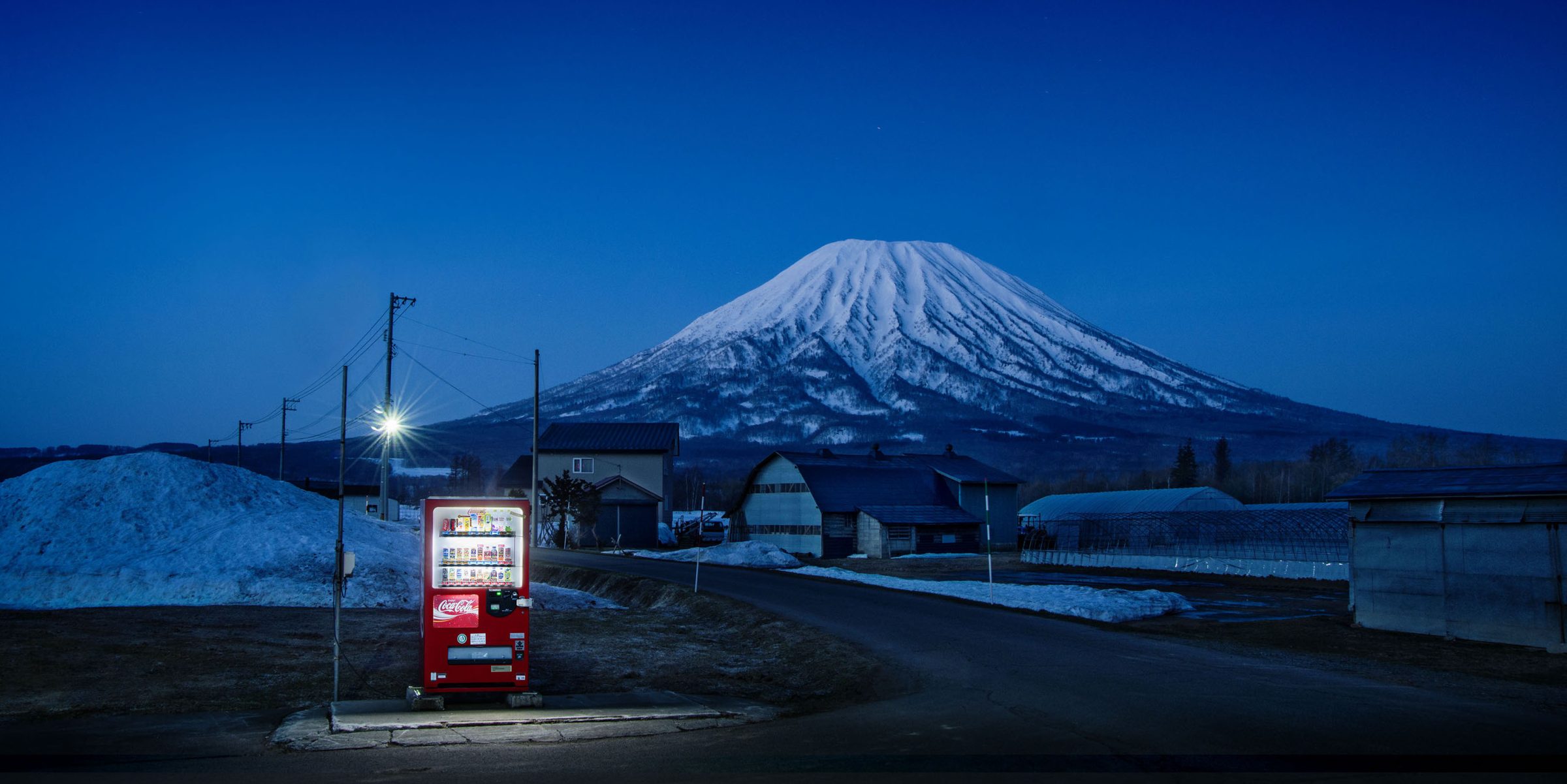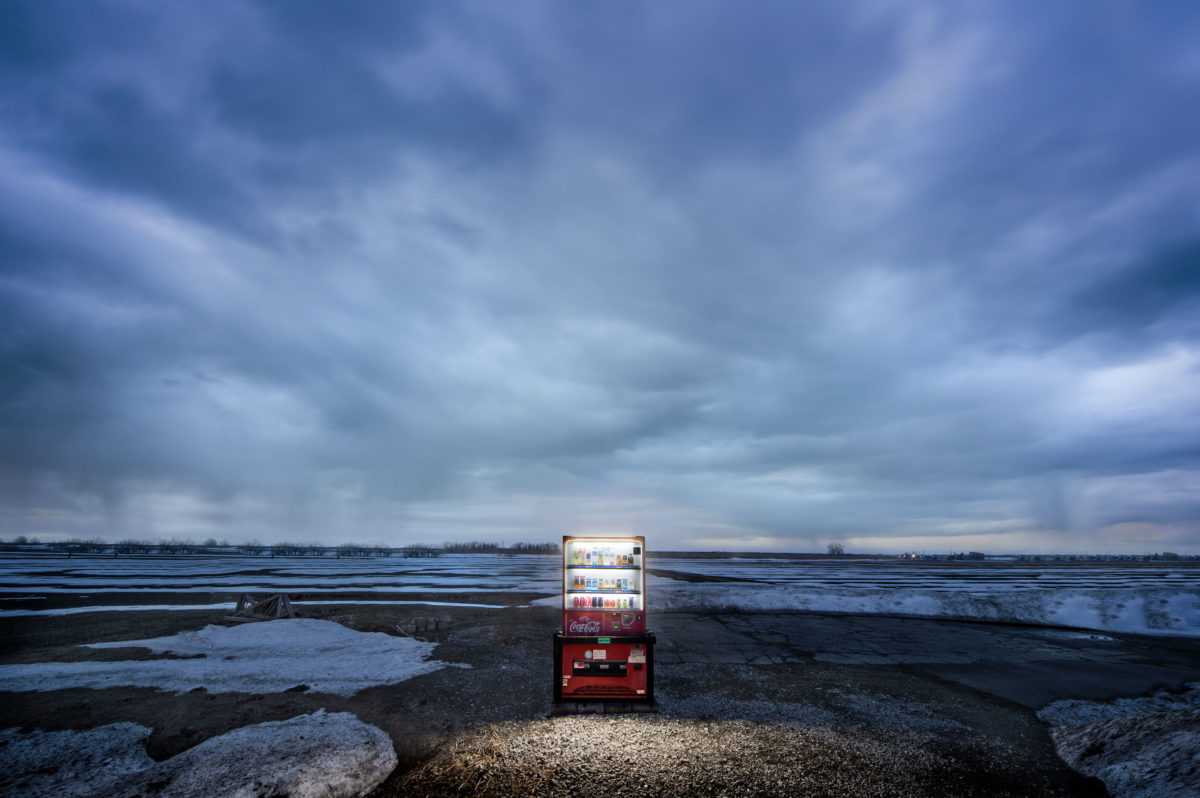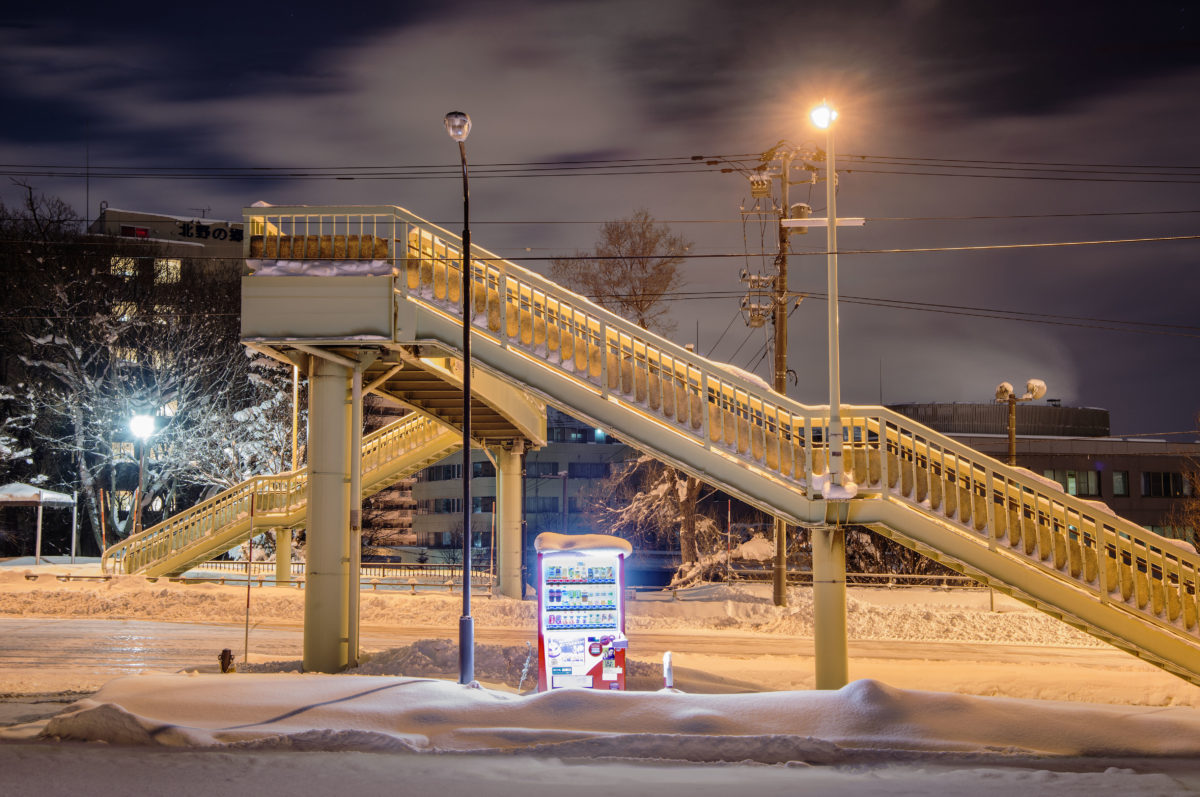Photographer Eiji Ohashi spent nine years tracking down the vending machines that punctuate Japan. A meticulous and finely executed work, the series Roadside lights contemplates Japanese society and the landscape of progress.
Jihanki
, Japan’s vending machines, are unique in the world. Not only do they distribute any kind of hot or cold drink, they are also everywhere, scattered across the country, from the heart of Tokyo to the northernmost island of Hokkaido. It was in the Hokkaido city of Wakkanai on a snowy night that photographer Eiji Ohashi had the idea of photographing the silent lighthouses of the Japanese landscape. Caught in a snowstorm, Ohashi used the glowing light of the vending machines to find his way home. After walking by dozens of them every day, it was the first time the photographer had really laid eyes on them.
From that day on, Ohashi traveled all across Japan to capture “the beauty of these very ordinary objects”. Ohashi has dedicated three books (Merci, Roadside Lights and Being There) and nine years of his life to these solitary objects. Because, to him, vending machines are social allegories, impregnated with meaning. They are emblematic of Japanese culture, where all should be easy, practical, comfortable. They are a metaphor of the modern worker, forced to work restlessly, and threatened with replacement. Ohashi shows us two pictures he took on a wide white plane. In the first one, in black and white, there are two vending machines side by side. In the second, shot in vivid colors, only one machine stands alone. “One of them was not selling enough, so they decided to eliminate it”, Ohashi tells us.
The beauty of unnoticed objects
Ohashi alternates black and white and color, analog and digital to emphasize either the evocative or the human aspect of his subject. Shot mostly at night, and with very long exposure times (15 minutes for the black and white and one minute for the color pictures), there is no human trace in the pictures. “I shoot at night because the lights are stronger; they are more vibrant”, Ohashi tells us. Although unromantic by definition, the vending machines are beautified by the photographer’s frames, celebrated, and placed in an unorthodox harmony with the landscape. “I want to surprise Japanese people with the beauty of these machines, show them what they have under their eyes and never notice”. Roadside Lights is currently exhibited at Galerie &co119 in Paris, and the last book of the series, Being There, was published last week.



© Eiji Ohashi, Courtesy Galerie &co119

© Eiji Ohashi, Courtesy Galerie &co119
Images ©Eiji Ohashi , Courtesy Galerie &co119








